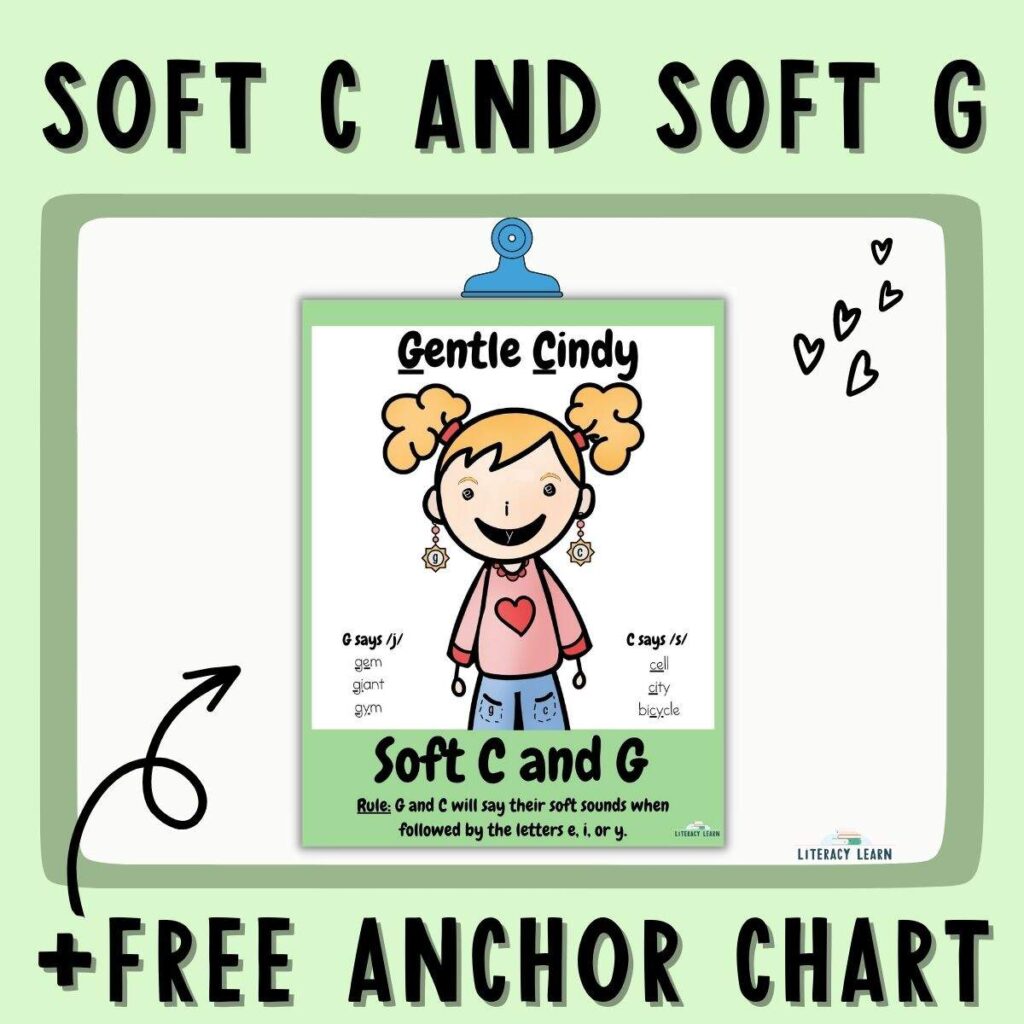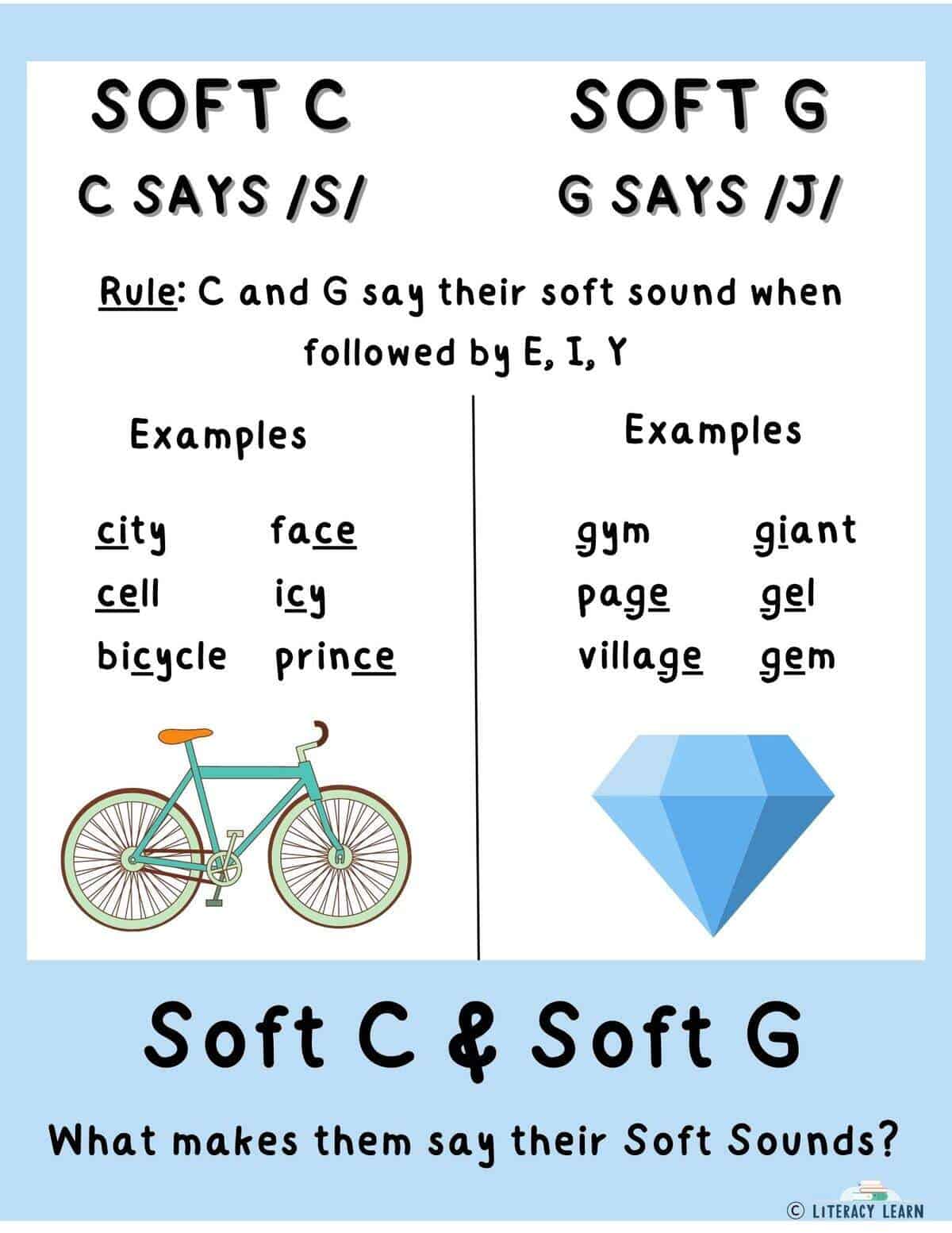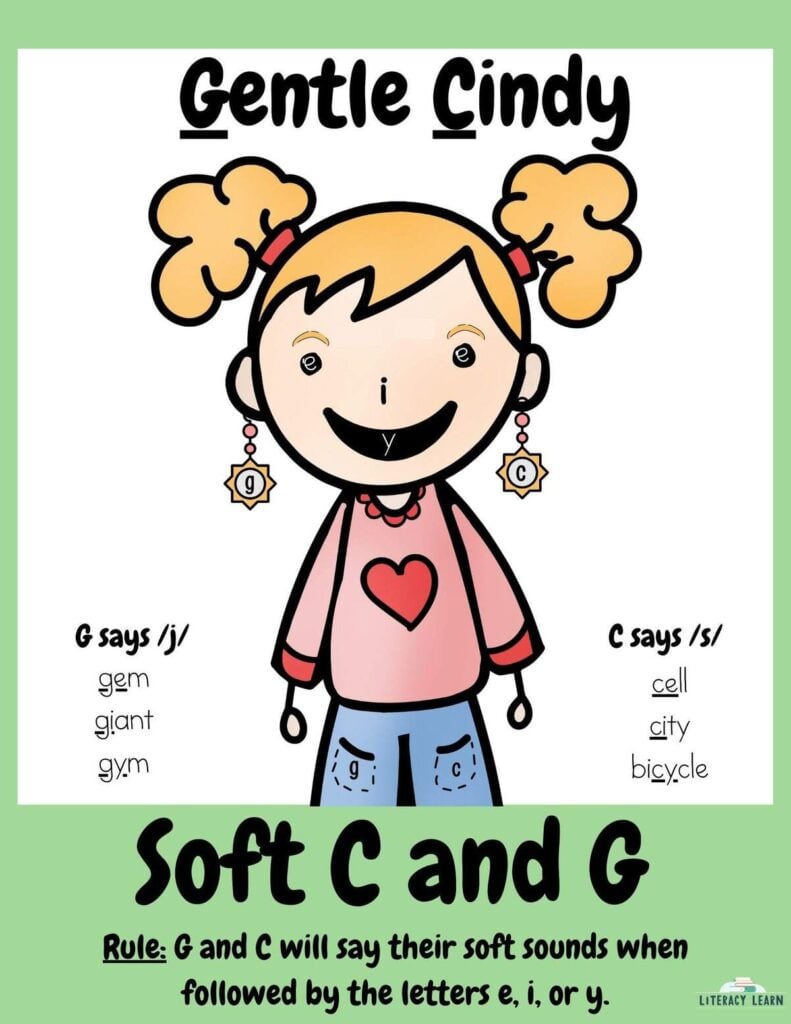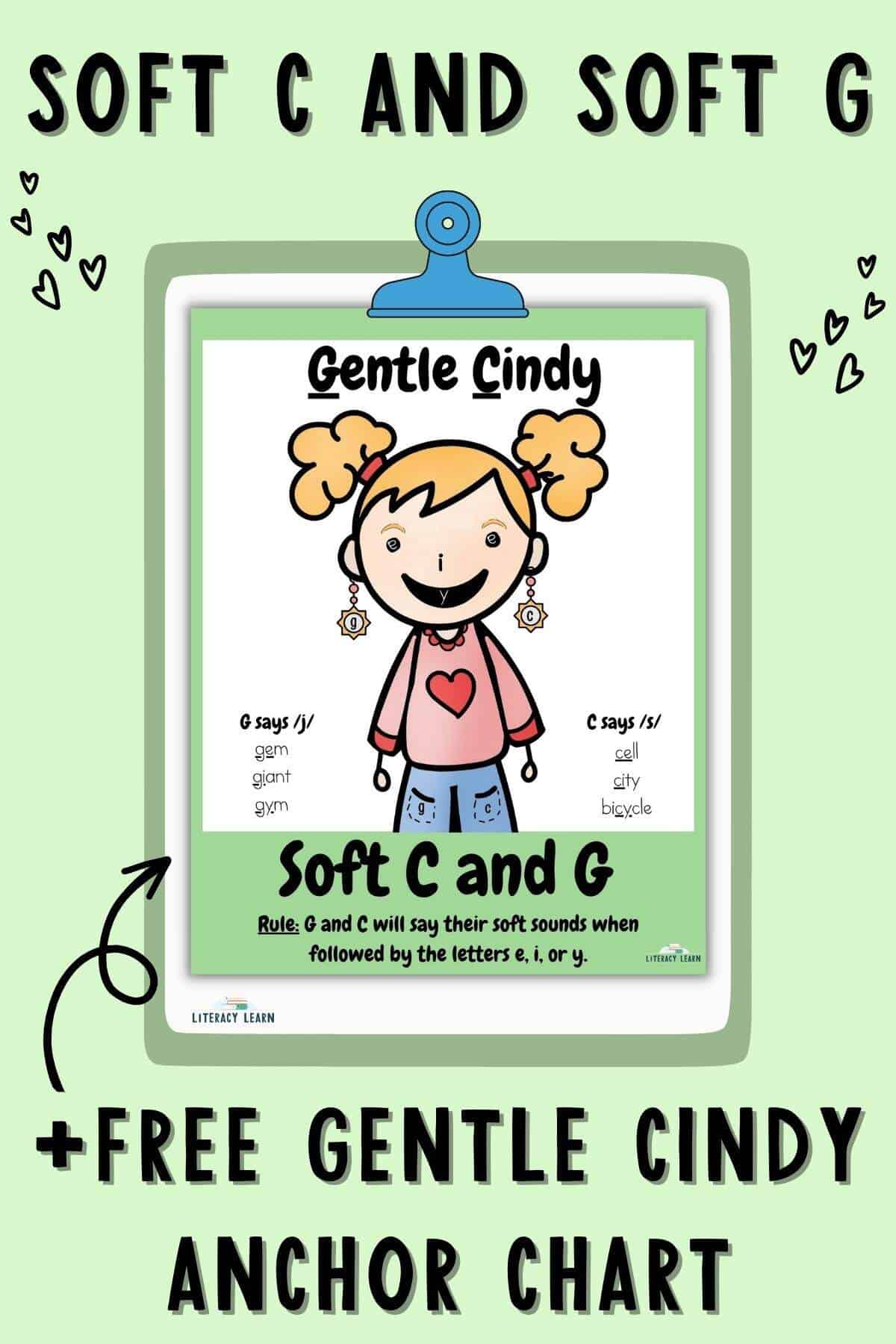Teaching Soft C & Soft G Sounds + FREE Anchor Chart
This post may contain affiliate links. As an Amazon affiliate, we earn from qualifying purchases. See our disclosure policy.
Learn all about teaching Soft C and Soft G sounds! Review the rule for when the letters G and C will say their soft sounds (C says /s/ and G says /j/), and grab a FREE Gentle Cindy anchor chart to display and add to your students’ phonics notebooks!

All About Soft C and Soft G
The soft sound of the letters C and G is the second sound we introduce to students, usually mid-first grade. It is the less common sound that these letters make. The rule is the same for when G and C will say their soft sounds.
👉 Rule for Soft G & Soft C: The Letters C and G will say their soft sounds when followed by the letters E, I, or Y.
- C will say /s/ like city.
- G will say /j/ like gem.
Soft C Word Examples:
- nice
- notice
- race
- circle
- cycle
- dance
- silence
- peace
- rice
- palace
- circus
Soft G Word Examples:
- large
- energy
- page
- strange
- George
- giant
- imagine
- danger
- charge
- magic

How to Teach Soft C and G
Students learn Soft C and Soft G best when they memorize its rule, with the help of a little girl named Gentle Cindy!
The Orton Gillingham-trained fellow that I trained with first introduced me to Gentle Cindy a few years back.
Gentle Cindy is essentially a visual image that helps students remember the rules for the Soft sound of C and G. Just listen to her name:
Gentle Cindy: Gentle makes the soft G sound – /j/. Cindy makes the soft C sound – /s/.
Not only does her name help us, but her face does too! Her eyes are actually the letter E, her nose is the letter I, and her mouth is the letter Y.
👌 This visual clearly reinforces the rule for Soft C and G: When followed by the letters E, I, or Y, the letters C and G will say their soft sounds.


Download your FREE Gentle Cindy Poster below.
Print in color to display or in black and white and let students color it in!!
👩🏼 Gentle Cindy as a Visual Aid
I always start by telling my students about how I’m going to draw a picture of the most beautiful girl in the world. Her name is Gentle Cindy.
After I quickly draw a face and hair, I make her eyes as the letter e, her nose as the letter i, and her mouth as the letter y. I then talk about how fancy she is and how she has monogrammed earrings and jeans – G and C.
I ask what they notice about Gentle Cindy, because some of her facial features are a little strange. Kids should point out how she has the letters E, I, and Y on her face. I then explain that we can remember the vowels that make the C and G say their soft sounds by looking at Gentle Cindy’s face.
This gets the rule across in a very visual and memorable way, and the students LOVE it. We have to make phonics instruction FUN whenever we can!
👉 Use my Soft C and G word list to examples of words to show how C + E, I, or Y make the /s/ sound, and C + E, I, or Y make the /k/ sound.
👉 Have students practice drawing their own versions of Gentle Cindy in their phonics notebooks. We draw Gentle Cindy, write the rules, and write examples of Soft C and G words.
By the end of the week, I give the kids a Gentle Cindy Quiz. I hand kids blank paper and they must draw their own versions of Gentle Cindy (or Gentleman Caesar, because he’s always an option too!) I’m always amazed because every child shows mastery on this fun quiz! It’s actually quite easy for them to remember.
We continue practicing throughout the week with lots of word reading, decodable sentence and passage reading, and word and sentence dictation practice.
We also use Soft C and Soft G word sorts to help kids tell the difference between the two sounds in words.
Kids typically need a lot of practice with this skill, so providing multiple opportunities for repeated exposure and practice is important.
Soft C and G Anchor Chart
- For classroom use, we recommend enlarging the Gentle Cindy Anchor Chart and printing in color.
- For individual use, print the black and white versions to include in their phonics notebooks. Kids enjoy making the anchor chart individualized with their own creativity.
- Once you’ve taught the soft sounds of C and G, be sure you add the graphemes to your sound wall. Displaying the Gentle Cindy Anchor chart nearby is a great idea!
Related Posts:
- All About R-Controlled Vowels
- Consonant+LE Read & Match Worksheet
- All About Word Ladders
- Free Heart Word Resources

🖨Download & Print
We’d love to hear about your experience using this resource!
Please leave a comment below or tag us on Instagram @literacylearn!
DOWNLOAD TERMS: All of our resources and printables are designed for personal use only in homes and classrooms. Each teacher must download his or her own copy. To share with others, please use the social share links provided or distribute the link to the blog post so others can download their own copies. Please do not save our files to a shared drive, reproduce our resources on the web, or make photocopies for anyone besides your own students. Your support in this allows us to keep making free resources for everyone! Please see our Creative Credits page for information about the licensed clipart we use. If you have any questions or concerns regarding our terms, please email us. Thank you!




I am OG certified and I love your stuff! When teaching students to *spell* soft c and g, are there any tricks or tips you have? Unless I’m missing something big, it seems to me that students will have to memorize most words to remember the difference between sense and cents, or gesture and jester.
Hey Rachel,
Since English is a morphophonemic language (which means we get our spellings from both sounds AND meaning) you will want to explicitly teach the spelling of these words in connection their meaning/definitions. For example, a word like ‘cents’ comes from a Latin root ‘centum,’ meaning hundred. Kids can easily connect to this because they should know there are 100 pennies in a dollar. Giving kids these explanations is a very powerful tool for understanding language and helps solidify the spellings (rather than just memorizing!) They can also use this information to make meaningful connections between words with similar spellings and meanings: cent, century (100 years), centimeter (100th of a meter), centipede (100 legs…well, almost!). We hope this helps!
Katie and Laura
Thank you so much for this anchor chart, it is lovely!!! Do you have an anchor chart of the Hard G and C together in one page?
Hi Merary,
We are so glad you like the anchor chart. We don’t have any anchor chart of the Hard G and C sounds, and that’s because kids should already be firm in those two sounds (for quite a while, really) before introducing Soft C and G. You can try some of our alphabet resources if you’re looking to firm up these concepts with some of your students. We hope this makes sense! Thanks again for reaching out!
Katie and Laura